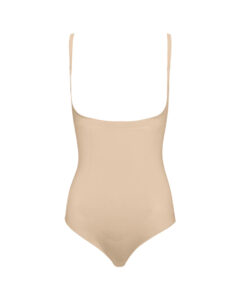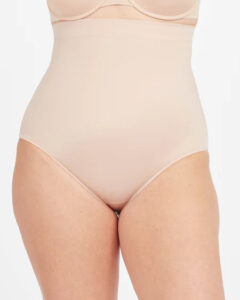
For a long time now, you absolutely have not liked the way your tummy has looked.
There is loose skin, undesirable stretch marks and your tummy just pooches out.
Perhaps somewhat embarrassingly.
This has persisted since your pregnancies.
Despite exercising, eating fairly healthy and trying to get off some of the fat, you have not been very effective in making your tummy look significantly better.
Tired of all of this, you consulted with a reputable plastic surgeon who is board certified by the American Board of Plastic Surgery and now you have your tummy tuck scheduled.
Nice decision!
As you have likely heard, there will be postoperative discomfort and some challenges. There are also risks and complications associated with the procedure, some which can be avoided and others where the probability of occurring can be reduced.
Let’s look at several things that you can do that may help to make your postoperative recuperation more comfortable, pleasant and uneventful. These are some of the instructions that I give my patients and they do make a positive difference.
They are not gospel.
If I am not your plastic surgeon then you should absolutely follow the recommendations of your plastic surgeon. You are, after all, their responsibility.
Take a Muscle Relaxant for the First 48 Hours
Because the abdominal wall muscle (rectus abdominis) repair represent a large part of the early postoperative discomfort, taking a muscle relaxant regularly for the first two days can go a long way in making you more comfortable. By doing so, this can also reduce your need for narcotic analgesics which have their own attendant issues.
There are several options available. Something as simple as Valium can do the job with the secondary benefit of helping reduce your stress.
Taking Pain Medication (Analgesics)
Taking medication for your discomfort can be helpful up to a point. Realize that there is nothing that you can take that will completely alleviate all of your postoperative symptoms.
Be very judicious in your usage of narcotic analgesics!
They can be helpful but they are a double edged sword – resulting in nausea, vomiting, constipation, extreme tiredness, sedation, dizziness and addiction. Vomiting, for example, can lead to the breakage of the muscle repair in your abdomen resulting in recurrence of the protrusion of your abdomen. The only way to address this is going back to surgery for a re-repair – not something that you otherwise would want to do.
Antacids
Stress from surgery, anesthesia and anxiety can increase acid production in the stomach leading to nausea. Taking narcotics can also increase nausea which can progress to vomiting which, as noted above, can disrupt the muscle repair.
To help reduce the risk or the severity of nausea during the first two to three days, prophylactically taking antacids or an OTC acid production inhibitor such as omeprazole (Prilosec) or pantoprazole (Protonix) during this short period can be very helpful.
Sleeping in a Flexed Position in Bed
For the first several weeks following your abdominoplasty, it is recommended that you sleep in a flexed position – around 30 to 45 degrees. This reduces tension on the incision allowing for better blood flow into the area, improved healing potential, narrower scars and less discomfort.
To accomplish this, you can place pillows behind your knees and either a wedge or pillows behind your back. If you have a bed that will allow a flexed position – you are in luck!
If this is difficult to accomplish, sleeping in a recliner is an alternative.
Getting Out of Bed
Getting out bed like most people do – by sitting up, using your abdominal muscles – can jeopardize the muscle repair done during your surgery.
Not good!
Instead, it is far better and safer to roll out of bed and use your arms thereby avoiding using your abdominal muscles which could break the surgical repair.
Ambulating
It is important not to lay in bed for long periods of time after your surgery. Ignore any advice to take it easy and lay in bed as it is good for you.
It is not true at all.
If you are tired, yes, get your sleep.
Lying in bed for long periods of time after surgery does increase your risk for developing blood clots in your legs and lungs. It also increases the risk of lung issues including pneumonia and does slow down the healing process.
For a faster postoperative recuperation process with lower risks of complications it is important that you are up and around multiple times a day.
Walking Bent Over
For the first several days following your abdominoplasty, you will feel more comfortable walking bent over to some extent. The reason is that by doing so, there will be less tension on the incision and, therefore, less pain.
Gradually, you will feel more comfortable as you stand straighter over a period of 4 – 7 days. By one week, most people are able to walk standing up straight relatively comfortably.
Abdominal binder
A well-fitting, well-designed abdominal binder can provide comfort, support and compression in the early postoperative period and aid you in your recuperation. It may even reduce the risk of some undesirable issues. This may be worn for a few weeks.
The binder should be snug but not tight or constricting as this could cause significant problems including impairment of blood supply to the tissues that could result in delayed healing, wound separation and even skin necrosis.
Ultimately, the binder can be replaced by a more comfortable, supportive elastic garment such as ones sold by Spanx® (see photos). This can be worn for a variable period of time.

OnCore Open Bust Panty Bodysuit

Suit Your Fancy High-Waisted Brief
Check with your plastic surgeon to find out their specific recommendations regarding wearing these garments and then follow their instructions.
Proper Nutritional Intake
Proper nutrition is absolutely essential for the healing process following your abdominoplasty. It is important to understand that your body will require far more nutrients, such as proteins, vitamins and calories, to accomplish this than you normally would need to consume.
Poor nutritional intake can lead to substantial healing problems including delayed healing, wound separation, wide scars, infection and skin necrosis.
These are issues that you do not want to have to deal with.
A well balanced diet with increased and substantial diversified protein intake and increased caloric intake is what is needed. This means consumption of animal proteins – like beef, chicken and fish.
Vegans, vegetarians and the like: beware! You are not getting all the necessary proteins from plants alone. Vegetarian and vegan protein shakes just won’t do the job.
Multivitamins including high dose Vitamin C are important to take.
Avoid Coughing and Sit Ups
Anything that can stress or even break the repair of the rectus abdominus muscles must be avoided. This includes coughing, sneezing, vomiting, straining when going to the bathroom, sit-ups and even getting out of bed using your tummy muscles.
Take whatever precautions that are needed to avoid these.
With breakage of the muscle repair, there is recurrence of at least some protrusion of the abdomen. This may require another surgical procedure in order to address.
Scar Mitigating Agents
You want your scars to look great – or at least as good as possible. Their ultimate appearance is affected by a multitude of factors that include surgical skill and technique, wound closure tension, nutrition, genetics, activities, age, smoking history and general health.
And a scar mitigating agent.
A scar mitigating agent is something that is applied to the scar that can aid in more ideal healing with improved outcomes compared to using nothing at all.
Examples of this include medical grade silicone gel, silicone sheeting or silicone tape. Studies have shown their effectiveness in improving scar outcome. Mederma and even topical Vitamin E can be used though are generally not as effective as the silicone agents.
Ideally, these should be started at around three to four weeks postoperatively. Ask your plastic surgeon for specific recommendations and usage.
Pursuing Your Tummy Tuck
If you want to improve the appearance of your abdomen and are considering pursuing a tummy tuck, you are welcome to contact our office to schedule your complimentary consultation with me.
You can reach us by calling the Arizona Center for Aesthetic Plastic Surgery at (480) 451-3000 or by contacting us online here.
Steven H. Turkeltaub, M.D. P.C.
Scottsdale and Phoenix, Arizona
